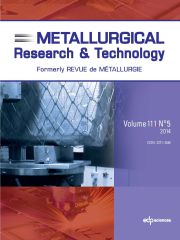Article contents
Effect of different factors on low temperature degradation ofhematite iron ore during reduction
Published online by Cambridge University Press: 04 April 2014
Abstract
Low temperature degradation (LTD) of iron oxides was investigated with the aim ofunderstanding how natural iron ores degrade under different conditions. Minimisation ofthis degradation would increase the acceptance level of natural iron ores as feedmaterials without prior beneficiation. In addition to temperature and reduction gascomposition, sample positioning in the reduction furnace and sample’s original weight werealso found to influence LTD. Samples placed in the top reaction zone of the furnace, whichhave the first contact with the reducing gas, were found to degrade 1.5 times more thanthose in the middle and bottom reaction zones. In addition, they presented a wide range ofsize in the disintegrated particles than those in the middle and bottom reaction zones.Furthermore, the samples with an original weight equal to or greater than 5 g, had adisintegration extent of less than 10%. Therefore, if the reduction gas comes into contactwith a certain material first, before contacting the iron oxide, it may serve to reduce onLTD during reduction. Furthermore, in laboratory conditions, the occurrence of lowtemperature breakdown of the natural iron oxides can be minimised by using samples with anoriginal weight equal to or greater than 5 g.
Information
- Type
- Research Article
- Information
- Copyright
- © EDP Sciences 2014
References
- 2
- Cited by

